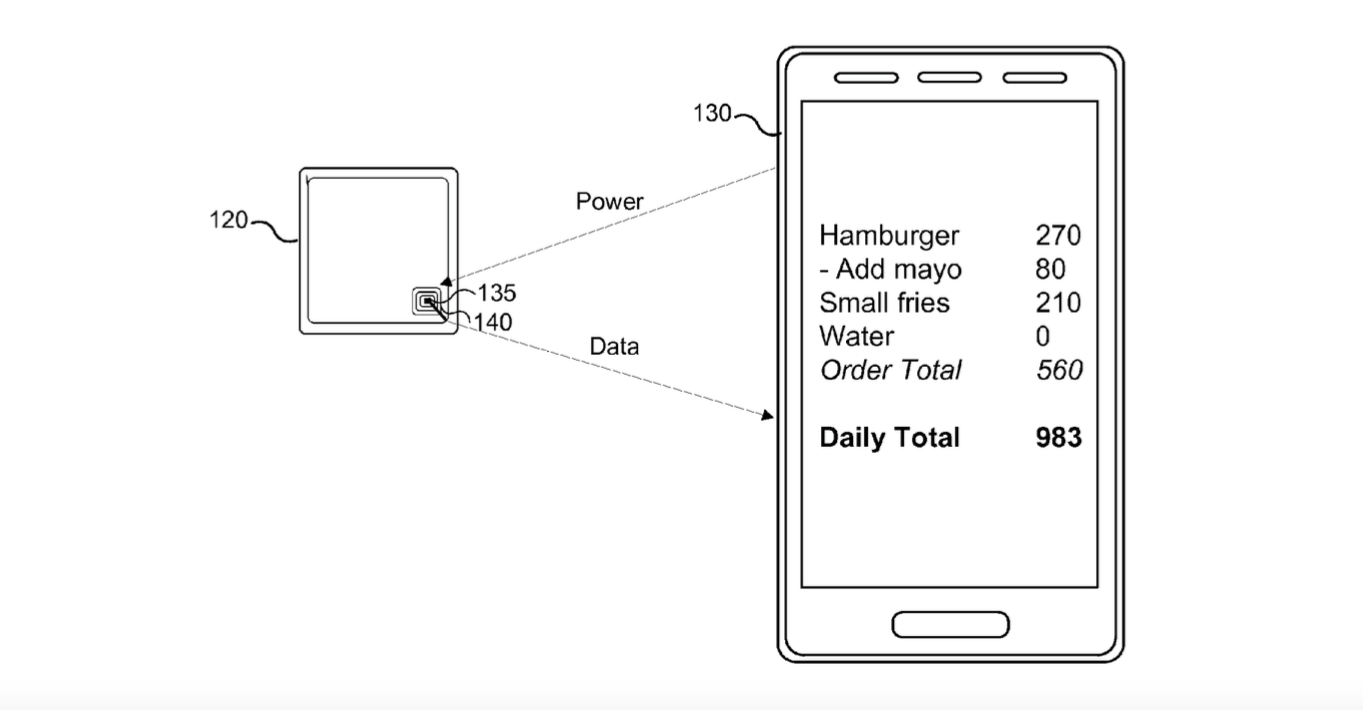Apple on Tuesday was granted the patent on a technology that would allow food vendors to embed the nutritional attributes of their products onto small, device-readable RFID tags, potentially paving the way for a uniquely automated solution for calorie counting, and more, according to the filing published by U.S. Patent & Trademark Office (USPTO).
Apple’s Patent, No. 9,640,088 titled “Electronic tag transmissions of custom-order nutritional information,” describes a method by which nutritional information — attributes of food, such as calories, fat, sugar and protein content — can be encoded onto device-readable RFID tags, allowing the nutritional information to be read by an NFC-capable device like an iPhone or an Apple Watch.
Specifically, the patent details a method by which food vendors could assign nutritional information on a “per item” basis, meaning that users could mix and match foods in order to determine the caloric and general nature of their consumption. In some embodiments the electronic, vendor-specific device is able to combine various components of a single food in order to present a per-item breakdown of nutritional info. For example, one might order a hamburger from McDonald’s with no ketchup and extra pickles. The device would essentially be able to create an RFID tag based on the nutritional value of that meal, providing a breakdown of the bread, meat, mustard, onions, and extra pickles— based on a pre-defined combination of values.

Once a food service employee is able to create the RFID tag using the technology built-into Apple’s device, he or she can affix the tag to an order’s packaging or receipt, allowing users to scan the tag and read its contents using their compatible mobile device.
In practice, the invention could serve as an integrated component of a healthy eating/calorie counting app, whereby users would otherwise manually log their consumption patterns in order to determine if they’re consuming a healthful diet. Specific metrics can be applied within this health-monitoring app, helping users to gain a deeper understanding and analysis of their daily eating patterns. In some embodiments, the caloric/nutritional value of a scanned tag could merely be deducted from a user’s daily allowance, issuing notifications of daily progress or recommendations on balancing intake.
On one hand, Apple’s invention presents an ideal solution to the “one-size-fits-all” model of most current food-monitoring apps, which primarily draw upon nutritional information stored in larger databases of commonly consumed foods. On the other hand, even if Apple were to try and implement this technology into a value-added service the company would have to overcome a myriad of hurdles. For example, indeterminate variables — such as user adoption rates and vendor-specific willingness to invest in the technology and maintenance of their own databases — are but a few among many concerns.
Still, the underlying technology here is as fascinating as it is sophisticated, and we could definitely see Apple rolling out a system like this on its own turf — at least to test its viability in the general market.
Want a FREE iPhone 7? Click here to enter our monthly contest for a chance!
Follow us on Apple News by pressing the (+) button at the top of our channel
from http://ift.tt/2pW4qNV
via IFTTT
No comments:
Post a Comment
Note: Only a member of this blog may post a comment.